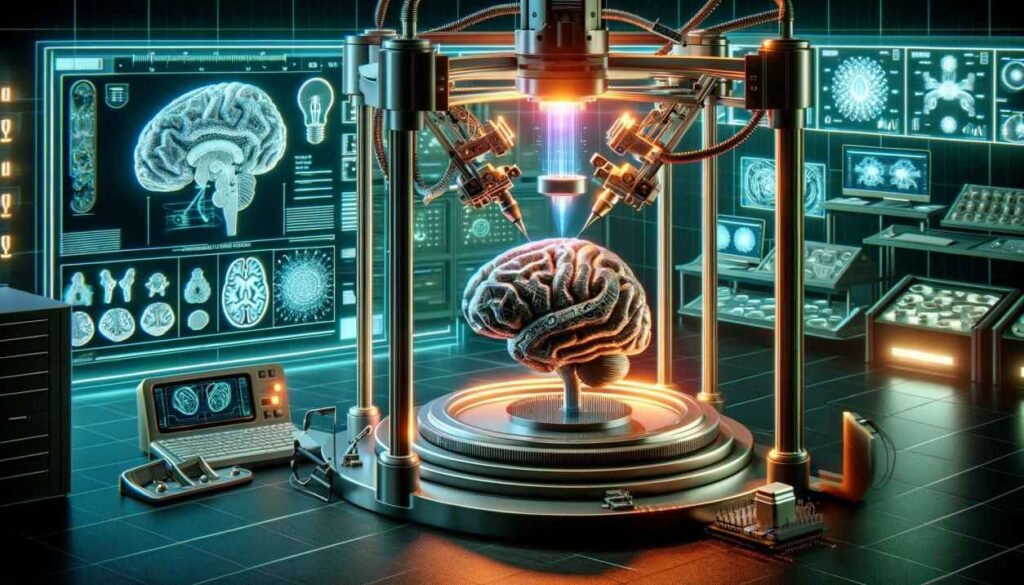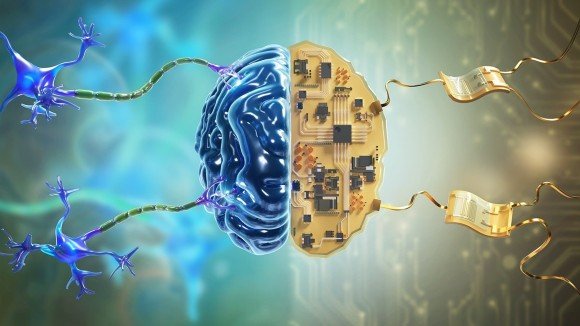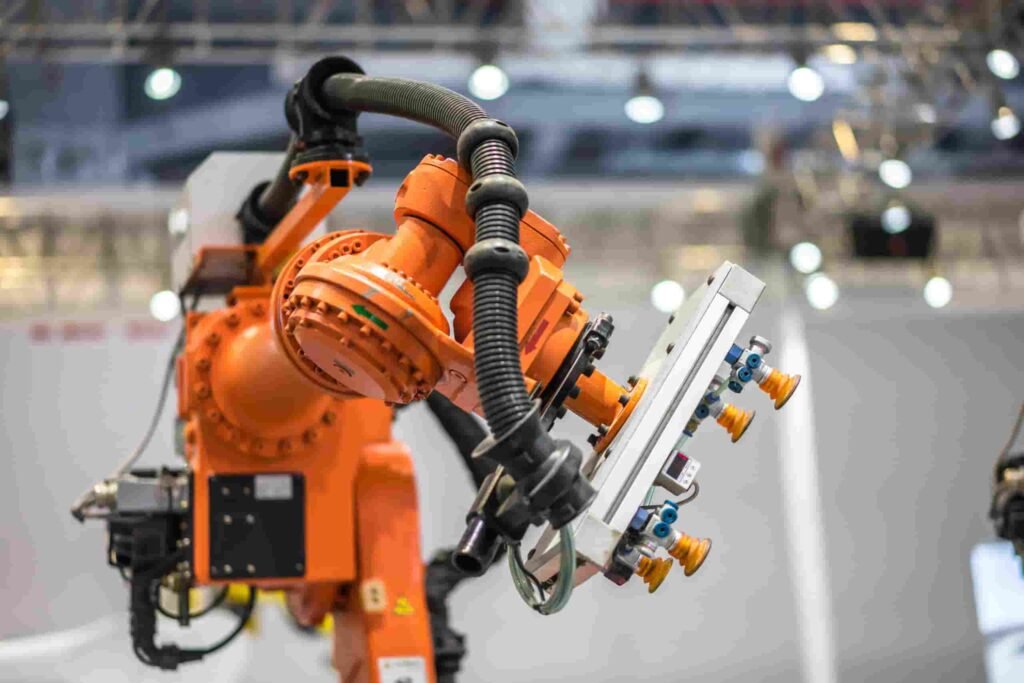Neuromorphic computing represents groundbreaking approach to facts processing.. that draws proposal from shape and characteristic of biological neural systems specifically human brain. This progressive field targets to layout and put into effect computing structures.. that mimic performance adaptability & strong information processing competencies of organic neural networks.
As we push limits of artificial intelligence and are searching for more efficient computing answers neuromorphic computing has emerged as promising paradigm. Its ability to triumph over barriers of traditional von Neumann architectures and its alignment with growing needs of AI programs make it important location of studies and improvement in modern day era.
Foundations of Neuromorphic Computing
The human brain serves because primary version for neuromorphic systems. With its splendid capacity to system complicated data learn from experiences & adapt to new conditions even as ingesting minimum power brain gives blueprint for creating greater green and flexible computing systems.
Key standards of neuromorphic structures
Neuromorphic computing is constructed on numerous key standards derived from neuroscience:
- Parallel processing: Like brain neuromorphic systems manner information in parallel taking into consideration efficient dealing with of complex responsibilities.
- Event driven computation: These structures function based on incidence of activities much like how neurons fire in response to stimuli.
- Local getting to know: Information is stored and processed domestically mimicking allotted nature of reminiscence in biological systems.
- Adaptive plasticity: Neuromorphic structures can regulate their structure and function based on enter and enjoy comparable to brains plasticity.
Historical Development
Early concepts and pioneers
The concept of neuromorphic computing may be traced again to Nineteen Eighties when Carver Mead pioneer within area delivered time period. Meads paintings on analog VLSI implementation of neural capabilities laid muse for neuromorphic engineering.

Milestones in neuromorphic research
- 1989: Carver Mead publishes Analog VLSI and Neural Systems seminal work inside discipline.
- 1990s: Development of silicon retinas and cochleae number of primary neuromorphic sensory structures.
- 2000s: Emergence of massive scale neuromorphic initiatives like IBMs TrueNorth and EUs BrainScales.
- 2010s: Advancements in memristor technology permit greater green synaptic implementations.
- 2020s: Integration of neuromorphic systems with edge computing and IoT devices.
Core Components of Neuromorphic Systems
Artificial neurons
Artificial neurons in neuromorphic systems are designed to emulate function of biological neurons. They integrate incoming signals and generate output spikes whilst positive threshold is reached. These neurons can be applied usage of various technologies which include CMOS circuits and novel nanoscale gadgets.
Synapses and connectivity
Synapses in neuromorphic systems represent connections between artificial neurons. They play essential function in facts processing and garage. Researchers are exploring diverse technologies to enforce efficient and plastic synapses inclusive of memristors and phase exchange materials.
Learning and plasticity mechanisms
Neuromorphic structures incorporate getting to know mechanisms inspired by way of biological plasticity. These include:
- Spike Timing Dependent Plasticity (STDP): method wherein electricity of synaptic connections is changed based totally on relative timing of pre and submit synaptic spikes.
- Homeostatic plasticity: Mechanisms.. that hold stableness of neural circuits while bearing in mind adaptability.
- Structural plasticity: potential to shape new connections or prune present ones based totally on revel in and enter.
Neuromorphic Hardware

Analog vs. Virtual implementations
Neuromorphic hardware can be applied usage of both analog or digital circuits or mixture of both:
- Analog implementations: These closely mimic non stop nature of biological neural systems and can be greater energy green. However theyre liable to noise and variability.
- Digital implementations: Offer more precision and less complicated integration with existing digital structures but may additionally eat greater energy.
- Mixed sign strategies: Combine advantages of both analog and digital implementations.
Specialized neuromorphic chips
Several specialised neuromorphic chips have been developed by way of studies institutions and groups:
- IBMs TrueNorth: digital neuromorphic chip with 1 million neurons and 256 million synapses.
- Intels Loihi: research chip.. that implements spiking neural networks with on chip gaining knowledge of.
- BrainScales: blended signal neuromorphic machine evolved as part of European Human Brain Project.
Challenges in hardware design
Designing neuromorphic hardware offers several challenges:
- Scalability: Creating massive scale systems with hundreds of thousands or billions of neurons and synapses.
- Power efficiency: Maintaining low energy intake whilst increasing computational talents.
- Noise and variability: Managing inherent variability in analog implementations.
- Integration: Incorporating neuromorphic structures into current computing infrastructure.
Software and Algorithms

Spiking Neural Networks (SNNs)
Spiking Neural Networks are key factor of neuromorphic computing. Unlike traditional synthetic neural networks SNNs procedure information usage of discrete spikes extra carefully reminiscent of biological neural networks. This technique can cause extra efficient computation and better temporal information processing.
Learning algorithms for neuromorphic systems
Developing powerful mastering algorithms for neuromorphic structures is an energetic location of studies. Some techniques include:
- Spike based backpropagation
- Reinforcement mastering tailored for spiking networks
- Unsupervised studying strategies inspired via organic plasticity
Simulation gear and frameworks
Several software program gear and frameworks have been evolved to simulate and application neuromorphic structures:
- NEST: simulator for spiking neural network fashions
- Brian: Python based simulator for spiking neural networks
- PyNN: simulator impartial language for constructing neuronal network fashions
- Nengo: Python package for building and simulating massive scale mind models
Also read: Machine learning Simple & Complete Guide 2024
Advantages of Neuromorphic Computing
Energy performance
One of maximum widespread advantages of neuromorphic computing is its ability for intense electricity efficiency. By mimicking brains ability to manner information with minimal energy consumption neuromorphic structures can doubtlessly perform complicated responsibilities using orders of value less electricity than traditional computers.
Real time processing competencies
Neuromorphic structures excel at actual time processing of sensory records and selection making. Their occasion driven nature and parallel processing talents lead them to well appropriate for applications requiring speedy reaction instances which includes self sustaining cars or robotic manage structures.
Scalability and adaptability
Neuromorphic architectures provide inherent scalability taking into consideration creation of massive scale structures which could adapt to new inputs and learn from experience. This makes them specifically suitable for coping with complicated dynamic environments and evolving task necessities.
Current Applications
Computer vision and photograph processing
Neuromorphic systems have proven promise in diverse pc vision responsibilities inclusive of:
- Object popularity and tracking
- Scene expertise
- Event based totally imaginative and prescient for high speed packages
Speech recognition and herbal language processing
The temporal processing talents of neuromorphic systems cause them to properly appropriate for speech reputation and natural language processing duties. They can successfully deal with continuous streams of audio statistics and adapt to special speakers and accents.
Robotics and self sustaining systems

Neuromorphic computing is being applied to robotics and autonomous systems to enable:
- Adaptive motor manage
- Real time selection making in complicated environments
- Energy efficient sensory processing for lengthy period missions
Neuromorphic Computing in AI and Machine Learning
Complementing conventional AI tactics
Neuromorphic computing offers complementary method to standard AI strategies:
- Low strength inference: Neuromorphic hardware can run trained AI fashions with substantially decrease electricity consumption.
- Online mastering: potential to evolve and research continuously makes neuromorphic structures suitable for dynamic environments.
- Multimodal integration: Neuromorphic architectures can certainly integrate records from couple of sensory modalities.
Addressing limitations of conventional neural networks
Neuromorphic systems address some limitations of traditional artificial neural networks:
- Reduced power consumption for inference duties
- Improved managing of temporal information and non stop studying
- Potential for greater brain like trendy intelligence
Challenges and Limitations
Scalability issues
While neuromorphic systems offer inherent scalability sensible demanding situations remain:
- Fabrication of huge scale neuromorphic chips
- Interconnect bottlenecks in large parallel structures
- Maintaining timing and synchronization in massive networks
Programming complexities
Programming neuromorphic structures provides specific demanding situations:
- Developing intuitive programming fashions for spiking neural networks
- Creating efficient mastering algorithms for neuromorphic hardware
- Bridging space among conventional programming paradigms and neuromorphic computation
Integration with current technology
Integrating neuromorphic systems with conventional computing infrastructure calls for addressing:
- Interface layout among neuromorphic and conventional digital systems
- Development of hybrid computing architectures
- Standardization of neuromorphic computing systems
Ongoing Research and Developments
Advancements in neuromorphic architectures
Researchers are continuously working on enhancing neuromorphic architectures:
- Developing extra efficient neuron and synapse models
- Exploring 3 dimensional chip architectures for expanded connectivity
- Investigating new materials for enforcing neuromorphic additives
Novel materials and fabrication strategies
Emerging materials and fabrication methods are being explored to beautify neuromorphic systems:
- Memristive gadgets for green synaptic implementations
- Spintronic gadgets for low electricity computation
- Photonic neuromorphic systems for excessive velocity processing
Hybrid neuromorphic quantum systems
The integration of neuromorphic computing with quantum computing is an thrilling location of research:
- Quantum inspired neuromorphic algorithms
- Neuromorphic manipulate structures for quantum computers
- Hybrid architectures combining strengths of both paradigms
Ethical Considerations
Implications for human like AI
As neuromorphic systems end up greater sophisticated moral questions rise up:
- The capability improvement of conscious or sentient AI
- Implications for human employment and social structures
- Ensuring accountable development and deployment of mind stimulated AI
Privacy and security issues
The precise characteristics of neuromorphic systems raise new privateness and protection issues:
- Protecting sensitive statistics encoded in adaptive neural networks
- Ensuring integrity of mastering tactics in neuromorphic systems
- Developing strong safety features for brain inspired AI
Industry Landscape
Major gamers and startups

The neuromorphic computing enterprise consists of installed tech giants and modern startups:
- IBM Intel & Qualcomm: Developing neuromorphic hardware structures
- BrainChip and GrAI Matter Labs: Startups specializing in part AI packages
- Applied Brain Research: Commercializing neuromorphic software program and algorithms
Investment tendencies and marketplace projections
The neuromorphic computing market is poised for sizeable growth:
- Increasing investment in neuromorphic research and development
- Growing demand for energy green AI answers in edge gadgets
- Projected marketplace size of several billion bucks by way of 2030
Future Outlook
Potential breakthroughs and packages
Exciting possibilities for neuromorphic computing encompass:
- Brain laptop interfaces with more advantageous studying abilties
- Ultra low strength AI structures for area exploration
- Neuromorphic sensors for advanced environmental monitoring
Integration with emerging technologies
Neuromorphic computing is likely to combine with different emerging technology:
- 5G and 6G networks for distributed neuromorphic processing
- Internet of Things (IoT) gadgets with embedded neuromorphic chips
- Augmented and digital reality structures with mind inspired processing
Recap of key factors
Neuromorphic computing represents paradigm shift in facts processing offering:
- Energy green mind stimulated computation
- Real time processing and adaptive mastering skills
- Potential solutions to boundaries of traditional computing architectures
The transformative ability of neuromorphic computing
As neuromorphic technologies preserve to boost they keep promise of revolutionizing numerous fields:
- Enabling extra shrewd and adaptive AI systems
- Transforming part computing and IoT applications
- Providing insights into brain characteristic and cognition
The adventure of neuromorphic computing from idea to fact showcases electricity of interdisciplinary studies and potential for biology inspired technology to shape destiny of computing and synthetic intelligence.
Challenges in imposing huge scale neuromorphic structures
Implementing big scale neuromorphic structures gives several widespread challenges.. that researchers and engineers are actively working to overcome. These demanding situations span hardware layout software development & device integration.
One of primary challenges is scalability in hardware production. While creating small scale neuromorphic chips is feasible scaling up to structures with thousands and thousands or billions of artificial neurons and synapses introduces complexities in chip layout fabrication & yield management. dense interconnectivity required to mimic organic neural networks can cause problems with warmth dissipation and sign integrity. Additionally preserving steady performance throughout large arrays of analog or combined sign components is difficult because of production variations and noise susceptibility.
Another essential hurdle is development of efficient getting to know algorithms for large scale neuromorphic structures. Traditional machine learning algorithms frequently dont translate without delay to spiking neural networks or other neuromorphic architectures. Researchers are working on adapting present algorithms and growing new ones.. that may effectively teach big neuromorphic networks at same time as leveraging their unique homes which include temporal dynamics and neighborhood learning guidelines.
Power control and distribution pose another widespread challenge. While neuromorphic structures are usually extra energy efficient than conventional computing architectures for sure responsibilities making sure uniform and stable power transport throughout large scale machine is complicated. This is particularly essential for analog implementations where variations in power deliver can appreciably affect computation accuracy.
Interoperability and integration with present computing infrastructure constitute any other set of demanding situations. Developing standardized interfaces and protocols for neuromorphic systems to communicate with traditional digital structures is important for their substantial adoption. This includes creating efficient methods for information encoding and decoding among spike primarily based and conventional representations.
Future
Neuromorphic computing has ability to revolutionize robotics and self sustaining systems by means of allowing greater efficient adaptive & smart operation. impact of neuromorphic technologies in this discipline is multifaceted and some distance attaining.
Firstly neuromorphic computing can drastically beautify sensory processing talents of robots and autonomous structures. By implementing neuromorphic vision sensors for example robots can method visible information in way its greater similar to biological systems. This allows for quicker reaction times higher motion detection & stepped forward overall performance in varying lights conditions. Similarly neuromorphic auditory and tactile sensors can offer extra nuanced and green processing of sound and touch inputs allowing robots to have interaction greater obviously with their surroundings.
Energy performance is every other critical region wherein neuromorphic computing makes significant effect. Autonomous robots mainly those designed for lengthy duration missions or operation in far off environments advantage substantially from low energy intake of neuromorphic structures. This can extend operational times lessen need for massive batteries & allow for implementation of extra complicated on board AI with out drastically increasing strength necessities.
Neuromorphic computing additionally contributes to more adaptive and learning capable robot structures. capacity of neuromorphic hardware to perform on line studying and continual edition makes it nicely acceptable for robots running in dynamic or unpredictable environments. This may want to cause robots.. that can analyze new responsibilities at fly adapt to modifications of their surroundings or their very own frame (e.G. because of wear or damage) & improve their overall performance through years through enjoy.
Moreover neuromorphic systems can enable greater green implementation of complex control algorithms for robotic motion and manipulation. parallel processing nature of neuromorphic hardware aligns nicely with simultaneous control of multiple actuators and joints in robotic systems. This can cause smoother more natural movements and better real time responsiveness in human robot interaction eventualities.





